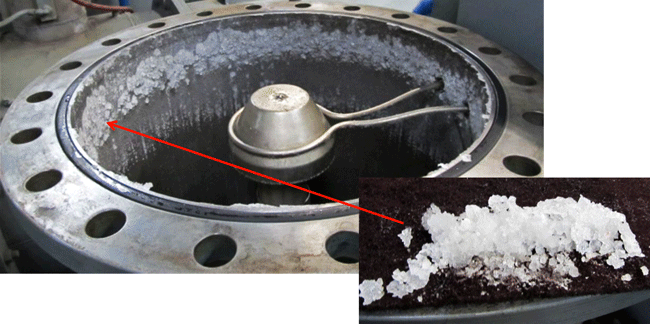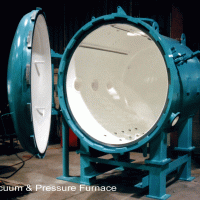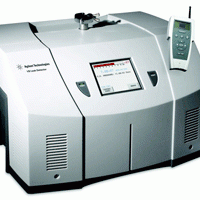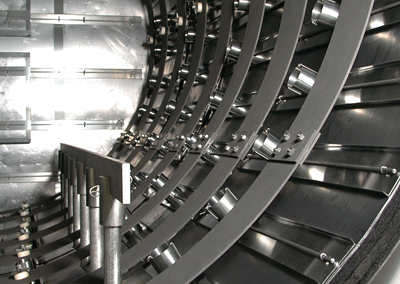In vacuum applications, cold traps are added to vacuum pumping systems either to remove unwanted contaminants (e.g. water, solvents, acidic or alkaline compounds) from the gas stream or to prevent pump backstreaming. These conditions can cause a loss of efficiency or damage when introduced into or emanating from the vacuum pumping system. In simplest terms, cold traps work by sublimating a gas molecule, that is, by transforming the molecule directly from the gas phase to the solid (crystalline) phase thus bypassing the liquid phase. The gas crystallizes out on a cold metal surface often appearing as “frost” on the trap.
Cold traps should be chosen that are large enough and cold enough to collect the condensable vapors in a vacuum system. Cold traps and cold caps refer to the application of cooled surfaces or baffles to prevent oil vapors from backstreaming (i.e. oil migration from the pumps into the chamber). In such cases, a baffle or a section of pipe containing a number of cooled vanes will be attached to the inlet of an existing pumping system. By cooling the baffle, either with a cryogenic liquid such as nitrogen, or by use of an electrically driven Peltier element (a thermoelectric heat pump device in which one side is cooled while the opposite side heats up when a voltage is placed across the device and which transfers heat from one side of the device to the other), oil vapor molecules that strike the baffle vanes will condense and thus be removed from the pumped cavity.





